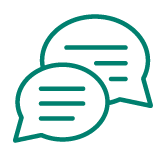Grace Gamboa
Mobile Financial Advisor | Sunshine Coast Credit Union Mutual Fund Representative | Qtrade Asset Management
Managing debt in 2024 – What you need to know
In the face of 2024's evolving interest rate landscape, what are your essential strategies for members to effectively manage their debt?
With rising living costs and changing interest rates, your financial picture likely looks different than it did last January. The money you borrow can significantly impact your budget and how you manage your finances month-to-month and longer-term. Managing your debt may be more critical to maintaining your financial health than ever. For 2024, we have to be smart with our spending because we don’t know what to expect. The goal is to hope for the best and be ready for the worst.
- Understand your debt: Borrowing money can be a useful tool to reach your financial goals – paying for your education, buying a home, or having a financial safety net. It may feel like just another monthly payment or bill, but it’s important to understand how much your debt costs you every month and what factors into how much you pay, what you owe, and for how long. If you don’t have one, make a list of your debts with relevant details like interest rates and monthly payment amounts to get a complete picture of what you owe and how much your debt is costing you monthly. If a debt has a variable interest rate, calculate the impact of an interest rate increase on your monthly costs. If you have high-interest debts, put an asterisk on those as a priority for repayment.
- Managing cash flow: Prepare for the upcoming year by managing your cash flow wisely. Allocate 50% to needs (shelter, food, transportation, insurance, utilities, and debt repayment), 30% to wants (entertainment, dining out, subscriptions, toys), and crucially, set aside 20% for future savings. Don’t leave this last! Some examples of where to save your money are Tax-Free Savings Accounts (TFSA), registered retirement savings accounts (RRSP), or the new First Home Savings Account (FHSA). Other examples of allocating your savings could be a vacation fund, an emergency fund, or home and car maintenance funds. Prioritize saving and make it a habit to build a financial buffer and have the money to finance your future.
- Financial safety nets: During stable employment, consider opening or increasing a Line of Credit (LOC) for emergencies while you’re gainfully employed. Try not to use it, avoiding unnecessary debt, yet have it as a backup in emergencies. Simultaneously, review your credit cards. Ensure your cards align with your goals, like cash back, travel, or purchase protection. If you carry a balance, consider moving to a non-reward credit card which often charges lower interest rates.
- Credit health check: Regularly check your credit score to help understand where your credit stands. Your credit score shows how well you manage credit and how risky it would be for a lender to lend you money. You can use your credit score as a report card of how you’re managing your debt and identify areas to improve. Reviewing your credit score can also help you spot any potential identity theft or fraud activity, like a charge on a credit card you don’t use often. It’s also good to review your credit report (a detailed record of your use of credit and how you manage it) to look for errors that may impact your credit score. You can access your credit score for free through Equifax.
Effectively managing your debt can help you achieve your financial goals and maintain not only your financial health but an optimistic mindset. It allows you to see the big picture and track the progress you're making in paying down your debt. Understanding where you are and the factors at play that influence your budget and debt can help you feel more in control and better able to make day-to-day financial decisions, even when there are unknowns ahead
The information contained in this article was obtained from sources believed to be reliable; however, we cannot guarantee that it is accurate or complete. This report is provided as a general source of information and should not be considered personal investment advice or a solicitation to buy or sell any mutual funds (and other securities). Mutual Funds are offered through Qtrade Asset Management (a tradename of Credential Asset Management Inc.)
We are always here to help
These articles are made available to you as tools for independent use and are not intended to provide investment advice. We cannot and do not guarantee their applicability or accuracy. All examples are hypothetical and are for illustrative purposes only. Please visit your branch to seek personalized advice from qualified professionals for all personal finance issues.









